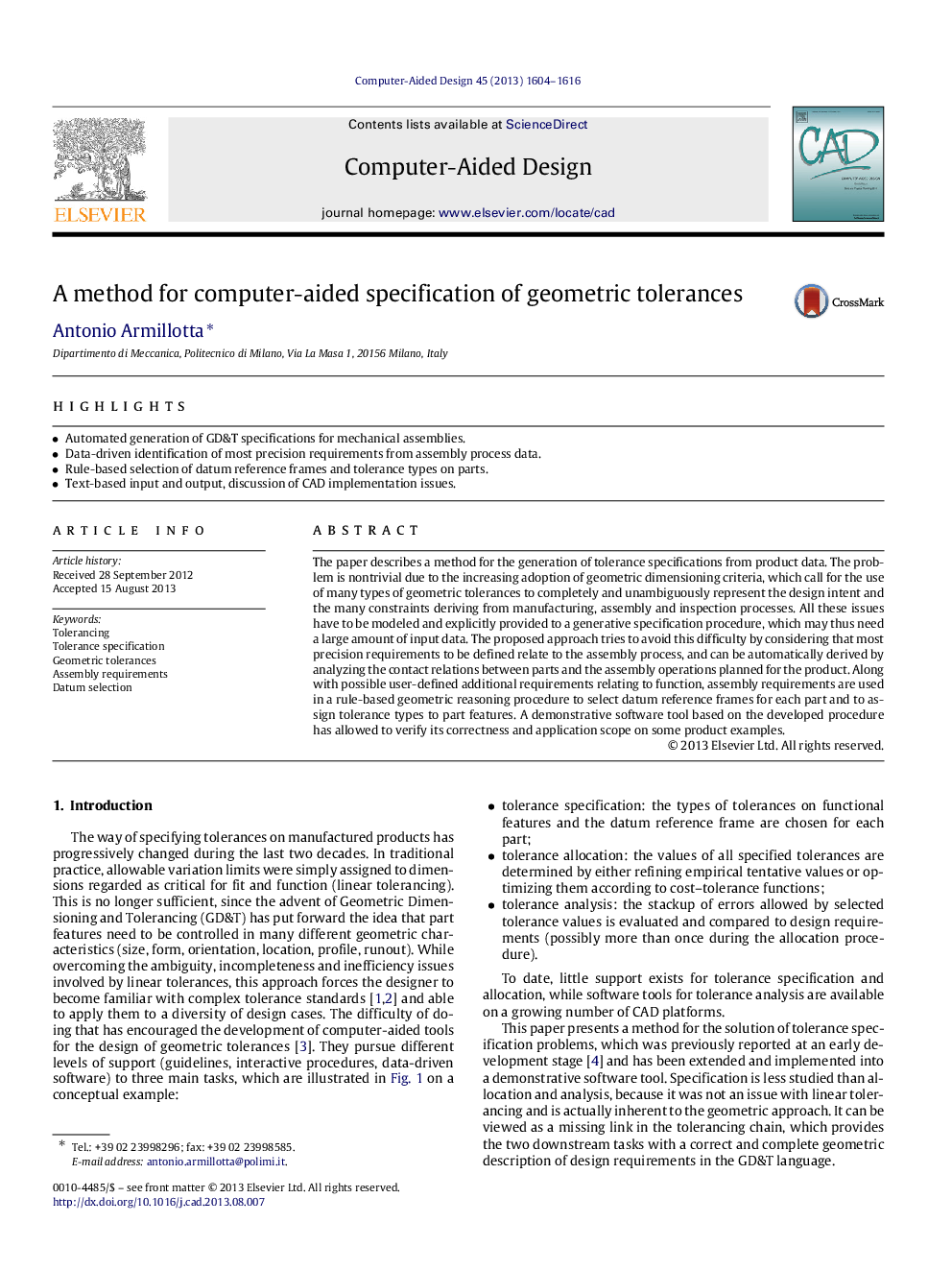| Article ID | Journal | Published Year | Pages | File Type |
|---|---|---|---|---|
| 10334923 | Computer-Aided Design | 2013 | 13 Pages |
Abstract
The paper describes a method for the generation of tolerance specifications from product data. The problem is nontrivial due to the increasing adoption of geometric dimensioning criteria, which call for the use of many types of geometric tolerances to completely and unambiguously represent the design intent and the many constraints deriving from manufacturing, assembly and inspection processes. All these issues have to be modeled and explicitly provided to a generative specification procedure, which may thus need a large amount of input data. The proposed approach tries to avoid this difficulty by considering that most precision requirements to be defined relate to the assembly process, and can be automatically derived by analyzing the contact relations between parts and the assembly operations planned for the product. Along with possible user-defined additional requirements relating to function, assembly requirements are used in a rule-based geometric reasoning procedure to select datum reference frames for each part and to assign tolerance types to part features. A demonstrative software tool based on the developed procedure has allowed to verify its correctness and application scope on some product examples.
Keywords
Related Topics
Physical Sciences and Engineering
Computer Science
Computer Graphics and Computer-Aided Design
Authors
Antonio Armillotta,
